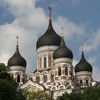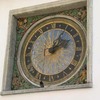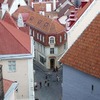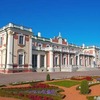Freedom in the Airwaves
Fact: In 2000 Tallinn had only three Wi-Fi hotspots. Today there are more than 300.
The grim decades of Soviet rule in Estonia gave the Cafe Pegasus, an austere '60s building just inside Tallinn's towering medieval walls, a reputation as a clandestine meeting spot for writers and intellectuals. "This was a place where you spoke about things you wouldn't speak about anywhere else," says owner Mart Tomson.
How times change. These days Estonia is open and democratic, and the patrons of hyperchic Pegasus, like the rest of Tallinn, now embrace wireless technology almost as a democratic right. Thanks to a blend of private enterprise and government benevolence, Pegasus is among scores of Tallinn venues to boast free Wi-Fi access.
Estonians see a link between easyor freeaccess to information and their new democracy. Back in 1991, when the country won its independence, a forward-thinking government looked to IT and the Internet as central pillars of its future economy. At relatively little cost, Estonia leapfrogged into a place among Europe's cyberelite.
Since then wireless has taken hold as nowhere else in Europe. Three of four people have a cell phone, and they can use it to pay for anything from a glass of beer to space in a parking lot (which, by the way, will call when your time is nearly up). Government ministers conduct weekly cabinet sessions online.
The key to the success of wireless has as much to do with a hands-off approach as with deliberate strategy. From the start, an independent Estonia pursued a ruthless free-market line: no state monopoly for telecoms, minimal regulation and healthy competition among commercial players. "The government sees no need to regulate," says Tex Vertmann, an IT adviser to Prime Minister Juhan Parts. In Estonia cyberspace belongs to all. That's democracy.
William Underhill





